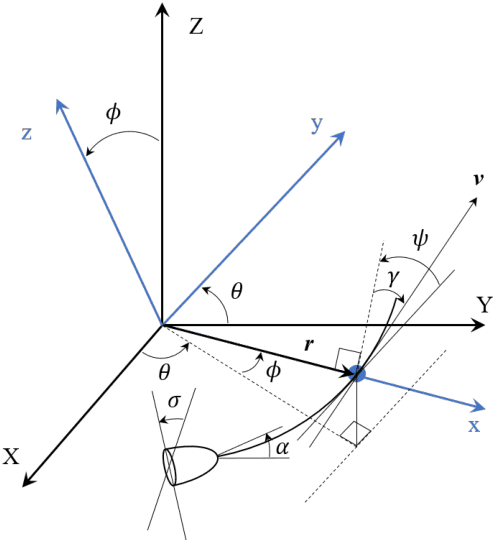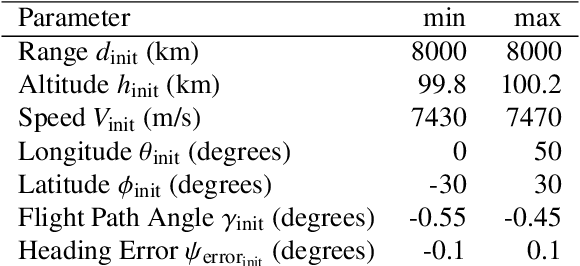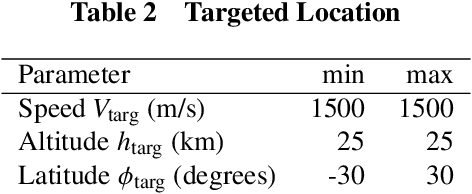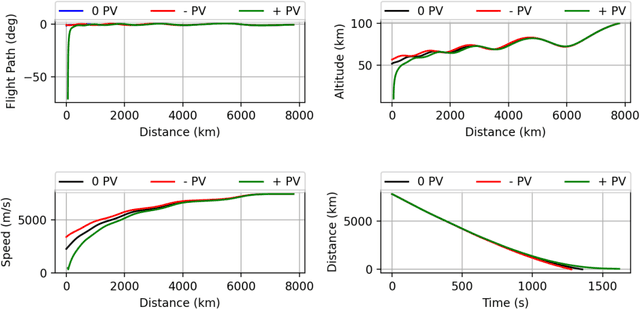Ryan Meltzer
Adaptive Approach Phase Guidance for a Hypersonic Glider via Reinforcement Meta Learning
Jul 30, 2021



Abstract:We use Reinforcement Meta Learning to optimize an adaptive guidance system suitable for the approach phase of a gliding hypersonic vehicle. Adaptability is achieved by optimizing over a range of off-nominal flight conditions including perturbation of aerodynamic coefficient parameters, actuator failure scenarios, and sensor noise. The system maps observations directly to commanded bank angle and angle of attack rates. These observations include a velocity field tracking error formulated using parallel navigation, but adapted to work over long trajectories where the Earth's curvature must be taken into account. Minimizing the tracking error keeps the curved space line of sight to the target location aligned with the vehicle's velocity vector. The optimized guidance system will then induce trajectories that bring the vehicle to the target location with a high degree of accuracy at the designated terminal speed, while satisfying heating rate, load, and dynamic pressure constraints. We demonstrate the adaptability of the guidance system by testing over flight conditions that were not experienced during optimization. The guidance system's performance is then compared to that of a linear quadratic regulator tracking an optimal trajectory.
 Add to Chrome
Add to Chrome Add to Firefox
Add to Firefox Add to Edge
Add to Edge